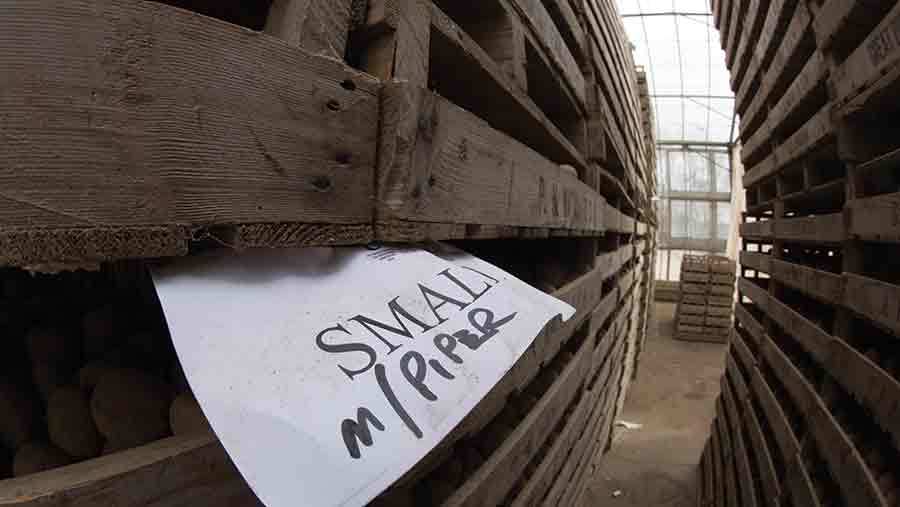7 expert tips to get the most out of your potato seed
 © Tim Scrivener
© Tim Scrivener The majority of seed potatoes will be on farm ready for planting by March. To ensure it is planted in tip-top condition, Crops asked Wholecrop Marketing’s technical director Chris Yardley for advice on best practice seed handling.
1 When the seed batch arrives on farm
- Seed orders are typically delivered in loads of 22 sealed bulk bags. Check all labels to ensure the seed grade, variety and size grade matches your order. If a seed treatment was requested, ensure it is correct.
- Break open at least three bags and take 10kg samples, check tuber counts and determine the 50kg equivalent – this is important when calculating seed rates at planting. Also, visually inspect the seed for rots, scab or any other gradable tolerances.
- If there are any problems, ensure at least five bags are left with seals unbroken and contact your supplier. If the supplier does not deal with the problem, an Animal and Plant Health Agency inspection can be requested.

Chris Yardley
Technical director, Wholecrop Marketing
2 Ensure the seed is kept in a cool, frost- and CIPC-free location
- Store seed under 4C if you don’t want it to break dormancy, but ensure it isn’t exposed to the possibility of rapid freeze-thaw, which can cause tubers to disintegrate.
- CIPC sprout suppressant can adversely affect emergence if seed comes into contact with any chemical residues in the fabric of farm stores or boxes. Only store the seed in buildings that have never been gassed with CIPC and only decant into clean boxes.
3 Decant seed into suitable storage containers
- Where there is an extended period to planting the seed, ensure bags are decanted into suitable boxes or trays to ensure adequate ventilation through the tubers – remember, bags are for transport, not for storage.
- Ensure boxes area labelled with the variety and stock number so varieties aren’t mixed up at planting time – the easiest way is to staple bag labels directly to boxes or tray pallets.
- Keep all labels until the produce of the crop has been sold for traceability.
- If seed is going to be planted in good time, it is OK to leave in bulk bags, but place them in a cool, dry place on pallets at least 18in apart.
4 Prior to planting, ensure all seed is dry and free from condensation
- Prevent any humidity that provides ideal conditions for fungal or bacterial pathogens in the fabric of stores, boxes or trays or uncontrolled by seed treatment on the surface of the tubers, including rhizoctonia and black scurf.
5 Avoid desprouting the seed
- Knocking sprouts off seed tubers provides a point of entry for disease into the mother tubers and reduces seed vigour. Ensure sprouts don’t grow too long ahead of planting to minimise the chance of damage.
6 Plant into warm, dry, free-draining soils
- Ideally, you want to store seed at 4C or less and plant it into soil temperature of 6-7C so it gets growing as quickly as possible. Avoiding cold, wet soils will also reduce the risk of soil-borne diseases taking hold.
7 Avoid deep planting
- Many growers plant too deep and leave the sprout a long way to travel, which slows emergence. Aim for about 6in of settled ridge above the seed, but adjust depth according to seed size – the smaller the seed, the shallower the planting depth.

